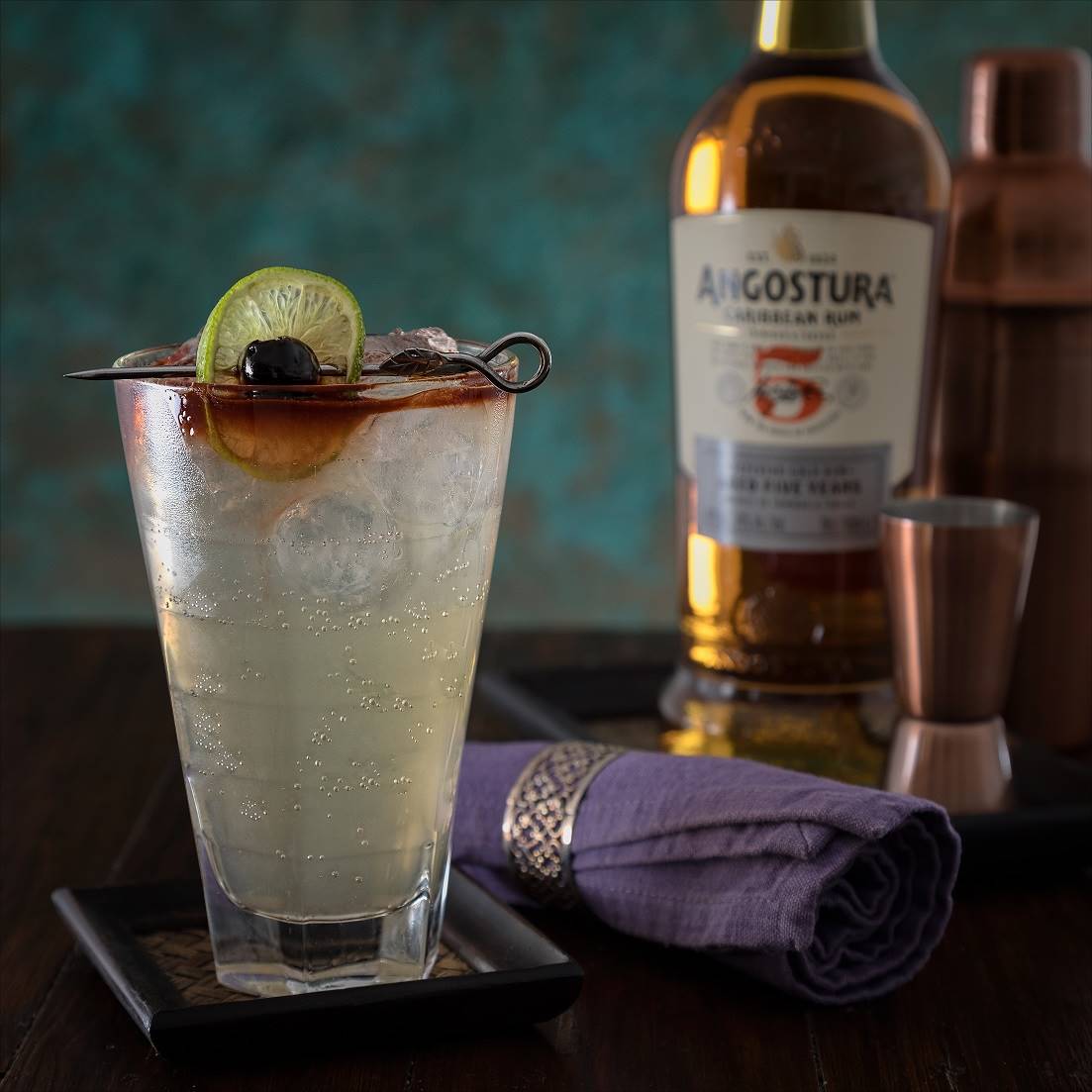High-end premium rums such as those from the House of ANGOSTURA® are taking the spirit to a new level.
In South Africa the SA Rum Awards bring local craft and international rum brands into the limelight with Tiki bars, rum cocktails, and rum style occasions.
August is rum month and there’s lots to celebrate! The spirit often associated with tropical islands, flamboyant cocktails, caricature pirates and fun times in the sun is all grown up now. And there’s a growing crowd of connoisseurs worldwide taking it seriously.
A GLOBAL RUM TREND
While high-end premium rums still account for a smaller percentage of total rum sales compared to equivalent gins, tequilas or whiskies, that percentage is steadily growing. The diversity of premium aged rums available internationally is also on the rise.
What elevates a rum to high-end premium status is the skill of the master blender, together with long aging of the rums in barrels. Blending rums of different ages brings out particular characteristics, and is a rare art that lends distinction and refinement to the finished product.
House of ANGOSTURA®, known worldwide for its iconic bitters, an essential ingredient in cocktails such as the sophisticated Old Fashioned, has been making rum in its state-of-the-art distillery in Trinidad since 1949. Master Blender Carol Homer-Caesar is expanding Angostura’s international rum range and taking their premium rums to new markets all around the world.
An essential ingredient, second only in secrecy to the House of Angostura’s legendary bitters recipe, she says, is the indigenous Trinidadian yeast strain used in the fermentation. Which, together with the terroir of the sugar cane and the ex-bourbon barrels used for aging, gives their rum brand its distinct personality.
Geographically rum production is linked to the cultivation of sugar cane. Fermented then distilled either from raw cane juice (rhum agricole), or more often from the molasses that is the by-product of sugar-making.
Rum originated in the Caribbean in the 17th century and while it’s still centred around the Caribbean and the Americas, rum-making has now spread worldwide wherever sugarcane is grown. And the recent emergence of specialised craft distilleries is testament to its growing popularity.
RUM IN SOUTH AFRICA
South Africa, as a sugar producing country, is a natural home to the new breed of craft rum-maker with many new local brands emerging since 2013. In 2020 the first SA Rum Awards took place, with Leah Van Deventer, judge and convenor of the awards, saying, “The rum category has been creeping up on gin over the years. It’s not yet in the same ballpark, but in the premium market it’s steadily growing. Especially as an interest for a loyal bunch of spirits geeks.”
The awards are open to any sugar cane-based spirit available commercially in South Africa, from domestic craft rums all the way through to imported international brands. Judged completely blind by industry experts (Van Deventer, Kurt Schlechter, Chantelle Horn and Coco Reinharz) each rum is assessed, just as wine would be, on nose, flavour profile and characteristics on the palate.
“We’re looking for complexity and depth of flavour,” says Van Deventer. “Rum has a very wide flavour wheel with characteristics ranging from mint to seaweed to basic molasses.”
One reason why the local craft rum industry is only now emerging from its infancy, compared to the craft gin boom of the past decade, is that the rum-making process takes a lot longer. After fermentation and distillation comes a slow maturation, aging in barrels for a minimum of a year but usually years longer.
“The rum trend is definitely building,” says Van Deventer. For the 2021 SA Rum Awards they’ve had at least fifteen new SA brands entered. “It’s amazing considering the year we’ve had that people are still creating new craft brands.”
The SA Rum Awards are one way of raising the profile and awareness of rum in South Africa. “I would like people to understand that rum can be enjoyed like a whisky,” continues Van Deventer. “However, you drink your whisky, with coke or ginger ale, neat or on the rocks, you can enjoy rum in that way too. We want people to appreciate rum for what it is.”
RUM COCKTAILS AND THE TIKI TREND
Just because you can be serious about rum, doesn’t mean it can’t still be frivolous and fun. The recent boom in Tiki bars attests to this. Impacted recently in South Africa by lockdown alcohol bans but still with us in spirit, the tiki bar celebrates light-hearted rum cocktails with a laid-back tropical vibe – paper umbrellas, straws, maraschino cherries and all. Go for 80s nostalgia with the pina colada, or the grenadine bright Mai Tai, a tiki classic.
Or sip sophistication in a Rum Old Fashioned with its essential dash of ANGOSTURA® bitters, savour a smooth Daiquiri, minty Mojito, or evocative Dark and Stormy.
CHOOSING A RUM
A good barista will have a number of rums in their spirits repertoire, knowing the characteristics of each and what it brings to the party.
White rum is generally the lightest and youngest of the rum family, recommended for vivacious fruity cocktails. An older golden rum has a deeper flavour and suits stronger mixes with spices and or herbs.
When you get to rums aged for seven years upwards, their subtle flavours and layered complexity are worth savouring neat or on the rocks – the thought of dousing a 15-year aged rum in fruit juice, cherries and paper umbrellas is just as much a faux pas as pouring cola onto a premium Scotch whisky.
Read the label carefully. The age of the rum listed reflects the youngest rum in the blend, so rum labelled as five years may have a percentage of ten or fifteen year-old rum in the mix adding maturity, complexity and depth.
It’s time to get curious about rum and give your tastebuds a dash of adventure.



